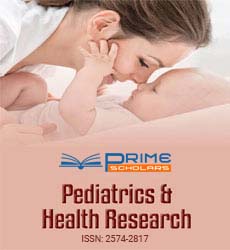Commentary - (2022) Volume 7, Issue 4
Inborn Error of Metabolism Leads to Decreased Bone Quality
Yoshihara Eiji*
Department of Pediatric Osteology, University of Cambridge, United Kingdom
*Correspondence:
Yoshihara Eiji, Department of Pediatric Osteology, University of Cambridge,
United Kingdom,
Email:
Received: 28-Jun-2022, Manuscript No. IPPHR-22-14200;
Editor assigned: 30-Jun-2022, Pre QC No. IPPHR-22-14200 (PQ);
Reviewed: 14-Jul-2022, QC No. IPPHR-22-14200;
Revised: 19-Jul-2022, Manuscript No. IPPHR-22-14200 (R);
Published:
26-Jul-2022, DOI: 10.36648/2574-2817.7.4.44
Description
Children are prone to upper cervical spine injuries because of
their relatively immature bones, lax ligaments, underdeveloped
muscles, and large head-to-body mass ratio. Odontophyte fractures
with chondrosis are one of the most common of these
injuries. Many of these fractures can be treated conservatively
with external splints, but fractures with significant displacement
cannot be reduced and require surgical management. In
these cases, most patients undergo posterior C1-2 fusion with
arthrodesis, permanently limiting atlantoaxial Range of Motion
(ROM). Here, we present a novel surgical approach to treat
Densoidal Chondrotic fractures using temporary internal braces
with a posterior C1-2 instrument without arthrodesis.
Hypophosphatasia (HPP) is an inherited musculoskeletal disorder
caused by variant inactivation of the ALPL gene and subsequent
decreased serum Tissue-Nonspecific Alkaline Phosphatase
(TNSALP) activity. Increased incidence of fractures and
prolonged bone healing are hallmarks of HPP. Available enzyme
replacement therapy (asfotase alfa) has been reported to restore
bone mineralization and bone quality in her adult HPP
patients. Furthermore, asfotase alfa was shown to improve
fracture healing from previous non-unions in two adult HPP
patients. We hypothesize that the articular joints are partially
filled with osteoids, offering great potential for treatment
with asfotase alfa to promote bone healing. In this study, we
report pediatric HPP and her three adult patients with her documented
ALPL mutation with prolonged bone healing after arthrodesis,
tibial stress fracture, and osteotomy. After initiation
of treatment with asfotase alfa, biochemical analyzes quickly
revealed increased levels of alkaline phosphatase (ALP) and
bone-specific ALP and decreased levels of pyridoxal-5-phosphate
(PLP). Importantly, even after up to 5 years without healing,
progressive consolidation was demonstrated as assessed
by custom three-dimensional analysis of repeated Cone-Beam Computed Tomography (CBCT) images. This is the bone volume
per tissue volume (BV/TV) within the volume of interest (i.e.,
the area of non-healing bone). These radiographic findings
were consistent with reported functional recovery, painless
full-body weight bearing, and increases in neuromuscular parameters,
such as improved muscle strength. Taken together,
our results suggest that asfotase alfa improves non-union Osteosclerosis,
possibly by re-mineralizing the anterior gap-filling
osteoid tissue, and improves function in adult HPP patients
characterized by increased BV/TV.
Osteogenesis Imperfecta (OI) is a genetic disorder characterized
by frequent fractures and bone loss. Here, we describe a
5-year-old boy with clinical, radiological, and bone ultrastructural
features typical of OI type 1. Determining the molecular
genetic cause of his condition proved difficult as clinical exome
and whole-exome analyzes were repeatedly reported negatively.
Finally, manual analysis of exome. This indicates that it activates
cryptic splice sites. In vitro studies of collagen expression
confirmed cell accumulation and decreased COL1A2 secretion
by 45%. This is the first report of potential splice sites within
the COL1A2 coding region. It causes aberrant splicing and causes.
Our experience with this case shows that routine diagnostic
approaches may miss cryptic splice variants in causative genes
due to the lack of universally applicable splice site prediction
algorithms. For exome-negative cases, detailed analysis of
common causative genes should be performed and trio-exome
analysis is recommended.
Acknowledgement
None.
Conflict of Interest
The authors declare that they have no conflict of interest.
Citation: Eiji Y (2022) Inborn Error of Metabolism Leads to Decreased Bone Quality. Pediatr Heal Res. 7:44.
Copyright: © 2022 Eiji Y. This is an open-access article distributed under the terms of the Creative Commons Attribution License, which
permits unrestricted use, distribution, and reproduction in any medium, provided the original author and source are credited.
